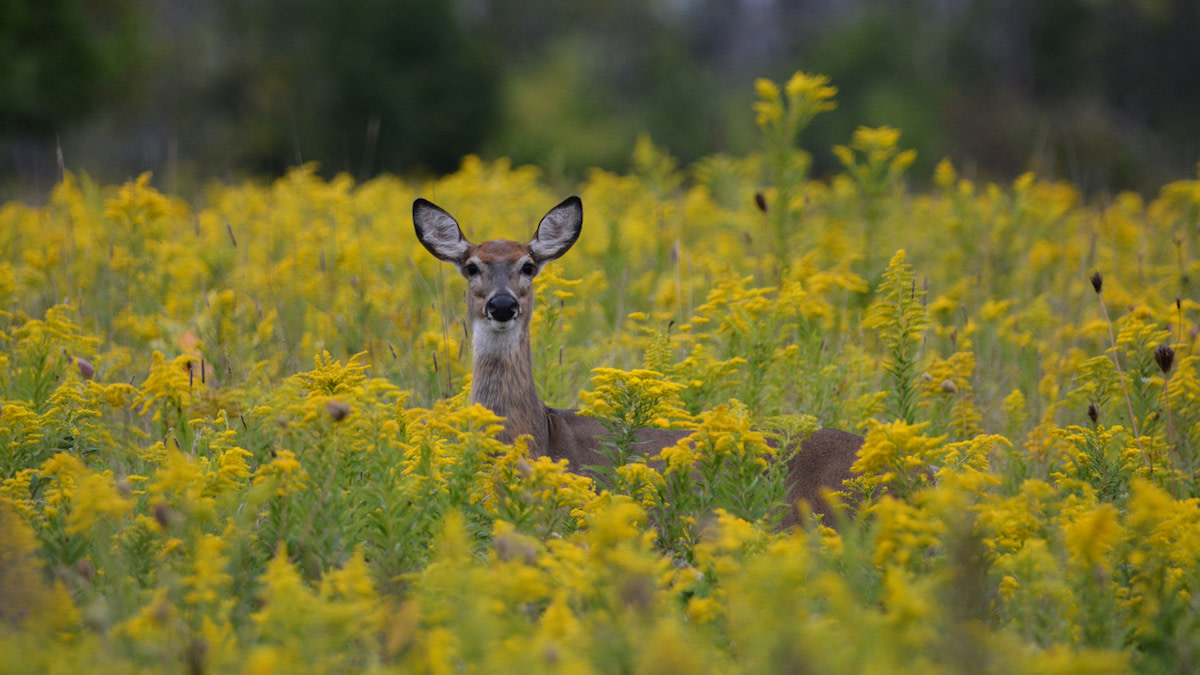
Find the feed tree. Pin down bed-to-feed patterns. Strike early and sit that field edge to ambush your target buck before the pressure heats up. These are all great tactics that can help you arrow an early season buck, or doe for that matter, but what if that bumper crop from last year dried up? Maybe you hunt the big woods and don’t have access to destination food sources like food plots or ag land. For all the deer these tactics have killed, they might not apply to your situation. Or, God forbid, an insane country-wide drought lines up with the first few months of deer season, and you’re forced to pivot from conventional tactics and brave unseasonably warm temps.
Contrary to popular belief, deer eat a lot more than acorns, brassica, and soybeans. In fact, I’m sure there are plenty of things deer eat that would surprise most hunters. If you think you’re out of the game because you don’t have access to primo food destinations, you might want to brush up on your botany.
Persimmons
Soft mast can be hit or miss, but for a brief time during the early season it’s usually a hit. If you’re lucky enough to locate a persimmon tree, you might have a dynamite spot for a short window. Persimmons tend to drop in late summer (August, September) typically before the first acorn crops, but they won’t last more than a month on the ground after deer and other critters find them. You’ll need to do some on-the-ground scouting before an October 1 opener to take advantage of them while they’re available.
There’s one persimmon tree on a particular property I hunt. It’s hot for the first two weeks of October and dries up overnight. While I’ve never arrowed a buck under this tree, it’s a doe magnet, and it’s been predictable almost every year I’ve hunted it. If you’re covering new ground for a hang-and-hunt and come across one that’s dropping, it might not be a bad spot to bet on if you’re looking to fill the freezer.
Honeysuckle
From food to bedding or geothermal cover, these non-native shrubs provide a host of benefits for deer. The hardy nature of honeysuckle makes it readily available even beyond the early season. Because honeysuckle was originally introduced as an ornamental plant, you’ll probably find large patches of it near old house places or fence rows.
Honeysuckle also flourishes in young or shaded timber stands where deer tend to stage. If this is the case where you hunt, skip the field edge and hunt the timber where bucks are likely to have an appetizer before hitting the main course. Several years ago, I ambushed a buck from the ground doing just that. He was browsing honeysuckle at the edge of a young pine stand. I shot him before he had a chance to step in the field, and he tipped over ten yards later.
Goldenrod
If you hunt private ground where you can manipulate the landscape, you might want to reconsider mowing down all the goldenrods. It’s more of a last resort for whitetails, but they’ll browse and bed in it, especially when other food sources are scarce. And they’re more likely to walk through it during shooting hours as opposed to a clean-shaven field.
Last year while on a travel hunt, I flushed a good buck from a patch of goldenrod while speed scouting. After jumping that buck, I took a quick survey of his bed and noticed he’d been browsing on the goldenrod in and around it. This was the first week of October. A drought was in full swing, acorns were scarce, and so was water. This buck had food, cover, shade, and a quick escape route all in one spot. While he probably wasn’t moving a ton during shooting hours, his bed was positioned on the edge of a woodlot where fresh droppings showed that he fed and made a couple rubs that morning.
It’s easy to think of deer movement as linear when we only key on a handful of food options. Especially if those foods aren’t part of a deer’s natural browse. Finding those other options won’t just tell you where the deer feed, they can enlighten you on how they’re using the landscape as a whole. Those dreamy early-season conditions might not be a reality when October rolls around. Deer will adapt regardless. You’ll have to do the same to notch your tag.
For more early-season education, check out these articles: How to Kill an Early-Season Buck in the Morning, Yes, you Can Kill big Bucks in Hot Weather, and How to Care for Venison in Hot Weather.







Conversation